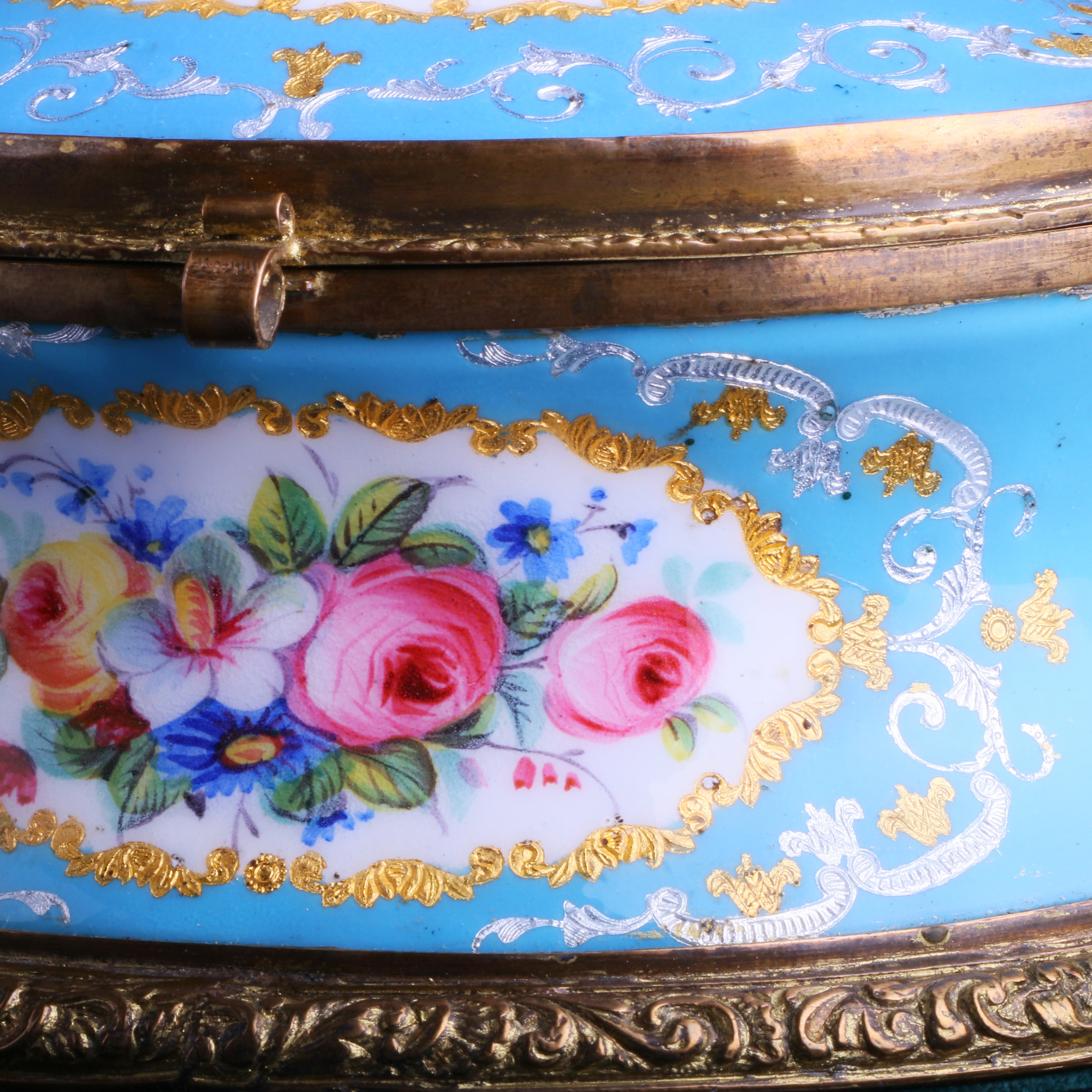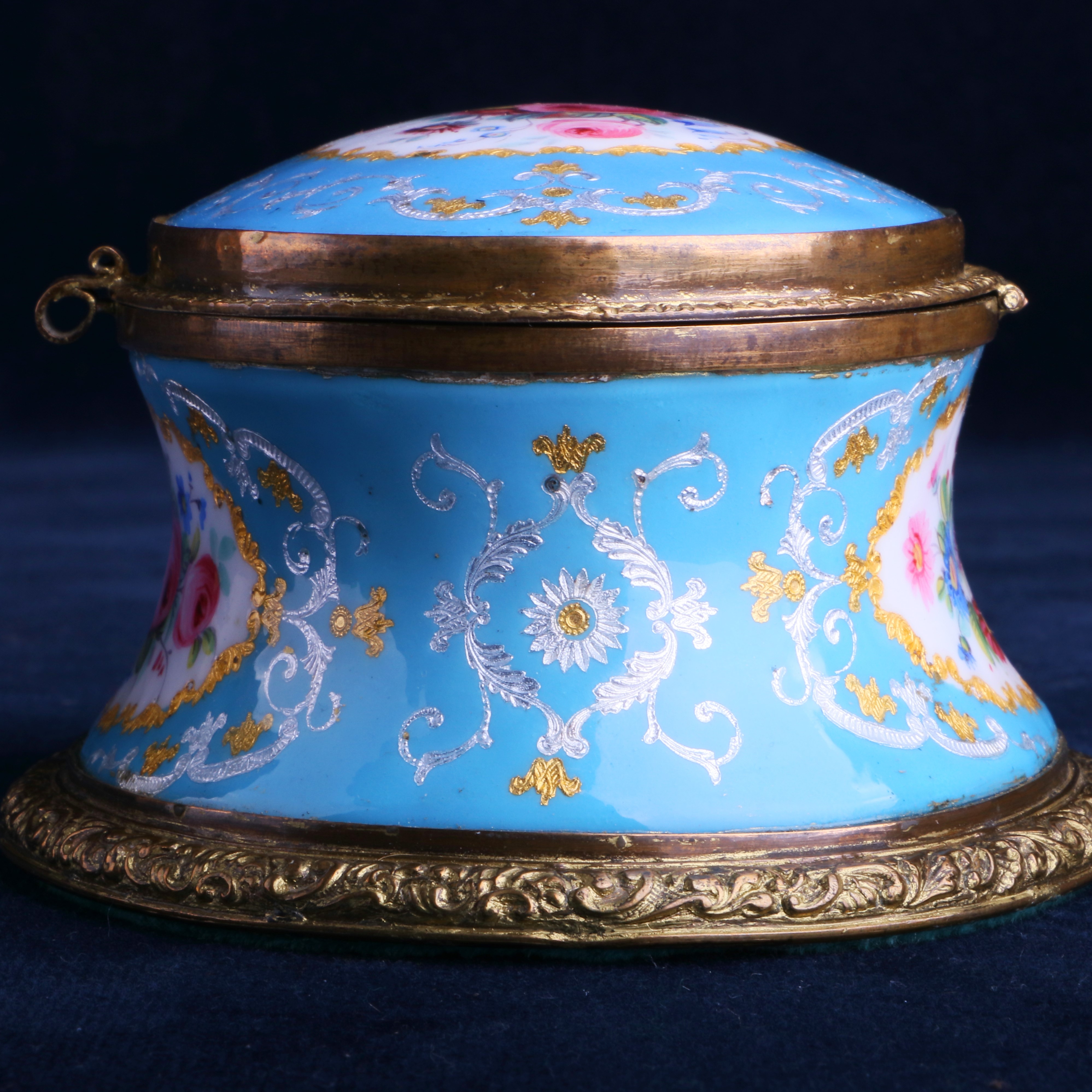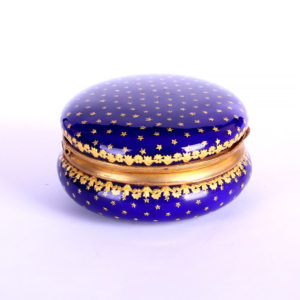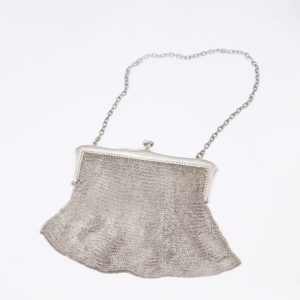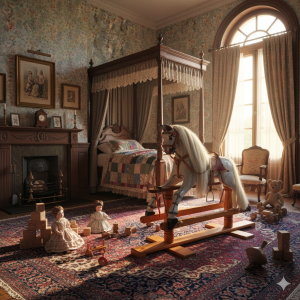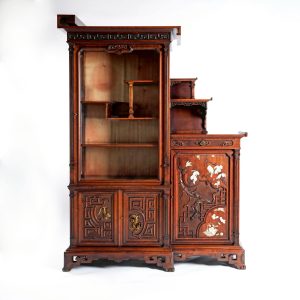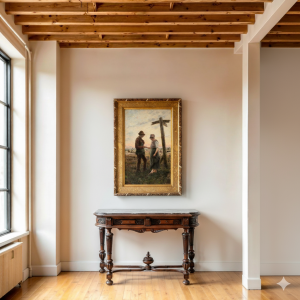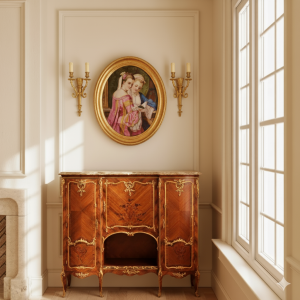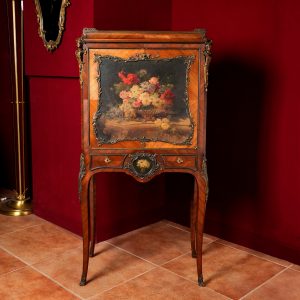描述
【利摩日琺瑯藝術歷史沿革】
在12世紀初,利摩日(Limoges)是歐洲主要生產宗教主題的琺瑯主要地區之一。利摩日琺瑯的榮耀在持續了一個多世紀。第一次復興與彩繪琺瑯的發展有關,始於1480年的文藝復興時期。利摩日琺瑯的藝術和技術在1550-1600年間達到了高峰,著名的製作琺瑯家族:利莫辛(Limosin)、努瓦耶(Noualhier)、科特西(Courteys)、雷蒙德(Raymond)、彭尼科德(Penicaud)、寇特(Court)。在1650年代開始進入衰退期,而利摩日琺瑯藝術的製作秘密隨著最後一代的勞丁(Laudins)和努瓦爾(Jean Baptiste Noualhier)而徹底消失。
利摩日琺瑯的第二次復興實際上從巴黎附近開始,由賽佛爾窯廠的琺瑯工坊的雅各布·邁耶·海涅(Jacob Meyer-Heine,1805-1879年)所領導。第一個在巴黎所製作得「利摩日」彩繪琺瑯器出現於1830年代的最後幾年,最早且最特殊的成品就是帕爾馬公爵夫人Duchess of Parma 洗手間的琺瑯作品(製金師弗羅蒙特·默里斯,1845年11月)。從1851年倫敦和1855年巴黎水晶宮萬國展覽會,彩繪琺瑯物件深受藏家喜愛,並於1885-1910年達到一個新的里程碑。畫家古斯塔夫·莫羅(Gustave Moreau,1826-1898年)與弗雷德里克·德·庫西(Frédéricde Courcy,1832-1913年)一起在意大利(1857-1859年)旅行了兩年,這兩位是法國發展彩繪琺瑯的重點人物。自1868年Moreau和Courcy合作後,他又與Alfred Garnier(1848-1908)合作。而Garnier之後也和Paul Grandhomme(1851-1944)密切地合作,他們這幾位大師的琺瑯作品,可以稱的上是第二次琺瑯復興最重要的作品,在巴黎的奧賽美術館和紐約大都會藝術博物館均有館藏及展出。
在手繪琺瑯的黃金時代裡,最主要的巴黎琺瑯大師名聲響亮,如克勞迪烏斯·波佩林(Claudius Popelin),保羅·索菲勒·索耶(Paul&ThéophileSoyer),阿爾弗雷德·加尼爾(Alfred Garnier)和保羅·格蘭霍姆(Paul Grandhomme),阿爾弗雷德·邁耶(Alfred Meyer),費爾南·塞斯瑪(Fernand Thesmar),德爾菲恩·庫爾(Charles&Georges Jean),蘇珊娜·阿普爾(Suzanne Apoil),弗雷德里克·德·庫西(Jacob Meyer-Heine),查爾斯·勒佩克(Charles Lepec),紫杉葉(Taxile Doat),路易·格里斯(Louis Grise)。
另外尚有許多未落款或是僅以簡單縮寫簽名的作品,目前已知有許多琺瑯畫家,其作品均未落款或僅簽縮寫,例如奧古斯特(Auguste)以及他的兒子朱利安·羅比拉德(Julien Robillard) ,夏洛特(Charlot)或多丁(Dotin)工坊,另外關於極有天賦的琺瑯畫家如傑曼·馬爾凱森(Germain Marchaison)、列維·科布倫茨(Lévy Coblentz)、 勒羅依(T. Leroy)、 佩內特(L. Penet)、普魯涅維爾( P. Prunevielle) 等,則只有留下很少的生平資訊。
有些時候一些落款利摩日琺瑯的物件,並不是在利摩日製作,而是在巴黎。這個起因是因為利摩日琺瑯已經作為一種風格的存在,但事實上,在巴黎開始的琺瑯第二次復興運動,後於利摩日地區也展開,只是規模較小,這次復興所製作的作品於1858年展出。在利摩日區域的琺瑯大師有Louis Dalpayrat(1838-1901)和年輕的Louis Bourdery( 1852-1901年)試圖運用文藝復興時期的琺瑯大師的脈絡,把這個技術傳承下來。著名陶藝家Adrien Dalpayrat的兄弟路易斯·達帕拉特(Louis Dalpayrat)於1871年展示了他的第一件琺瑯作品。1875年,在Ferdinand Lot的資助下,路易斯·達帕拉特(Louis Dalpayrat)成為了第一個在利摩日成立大型工作室的琺瑯手繪師,並且僱用了10多名藝術家。 Lot&Dalpayrat公司於1879年解散。一年前,他們在1878年巴黎的萬國博覽會上獲得銀牌獎。而他們工作室內最好的琺瑯師傅Ernest Blancher(1855-1935)在1880年接管了工作室。那年,路易斯·達帕拉特離開法國前往英國,在那裡他發表了有關琺瑯的著名書籍(利摩日早期琺瑯師傅的製釉工藝:一系列實用課程,1881年),並培訓了第一批英國工藝美術琺瑯藝術家,包括其中的主要人物,亞歷山大·費舍爾Alexander Fisher(1864-1936)。 Dalpayrat還在1882-1883年為維多利亞和亞伯特博物館工作。
自此之後利摩日琺瑯的藝術發展日趨緩慢。隨著琺瑯藝術開始在法國其他區域如卡尼爾、格蘭德霍姆和塞斯瑪開始有重大的藝術進展,在1889年巴黎萬國博覽會上,只有兩個利摩日琺瑯藝術作品得以展示分別是布蘭切爾(E. Blancher)和包德里(L. Bourdery)的作品。
19世紀的最後十年,代表Art Nouveau和現代美學標準的年輕一代琺瑯藝術家帶來了新氣象。第一次世界大戰之後,利摩日的琺瑯的領導角色為:邦諾(P. Bonnaud)(1873-1953),朱爾斯·薩蘭迪(Jules Sarlandie(1874-1936),萊昂·茹阿烏德(LéonJouhaud)(1874-1950),卡米爾·法雷(CamilleFauré)(1872-1955),亞歷山大·馬蒂(Alexandre Marty)(1876-1943)和歐內斯特(Ernest)的兒子羅伯特·布蘭歇(Robert Blancher,1895-1975年)在第二次世界大戰之前,第二次利摩日琺瑯復興宣告結束。




